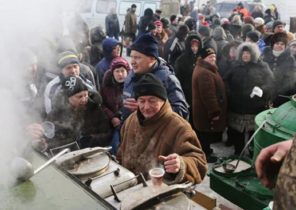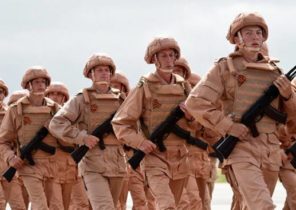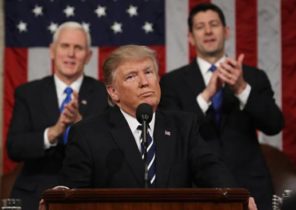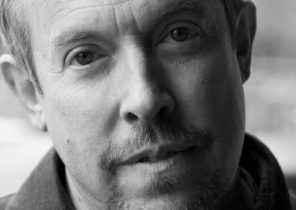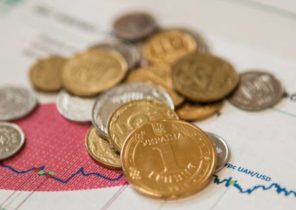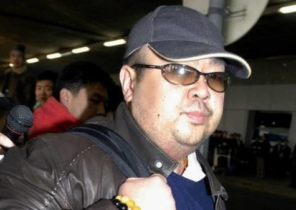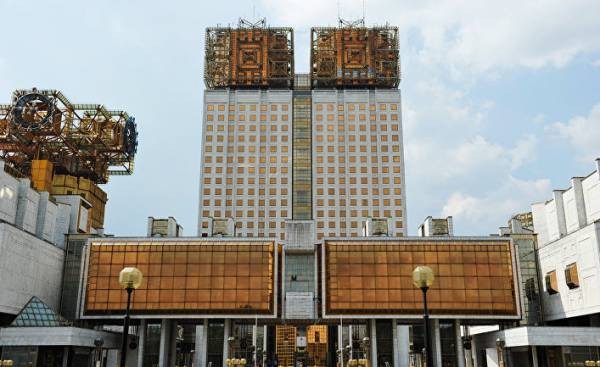
In the dark Moscow night, the dim light just adds to the mystery of the amazing complex. About located on the top of two twenty-storey towers designs go to the most crazy theories. The allusion to space travel? A new type of battery? A nod to the superconductivity? Incomprehensible and useless thing?
The prestigious building of the Presidium of the Russian Academy of Sciences reflects, in some cases, contradictory nature of national science. A mixture of tradition and modernity. Doubts about the development model. The difficulty with the restoration (the tower was occupied only 25 years). And the symbol of a sharp turn: in 2013, unexpected and criticized the reform of the RAS has been turned upside the head with nearly three centuries of history founded in 1725, to the organization.
In other words, this is the perfect place to begin to form an idea about the status of science in Russia, as decided (perhaps inadvertently) the idea for the press tour which was organized by one of the main Moscow universities, the Moscow physical-technical Institute, also known as Phystech. “The state relies on science, and the fruits begin to ripen,” claims on top of one of the towers Sergey Matveyev, representative of the Ministry of science. In the framework adopted in December 2016, the law was approved by the scientific strategy: “independence”, “science as a factor of development”, “competitiveness”… While there is no denying weaknesses in the country. So, although Russia ranks fourth in the world in number of scientists (450 thousand according to the OECD and 720 thousand according to UNESCO), behind only the United States, Japan and China, on her account only 1.6% of scientific publications as against 3.5% in France and 21.4% in the US (in 2013).
Its expenditures on research are growing quickly and are currently a little over 1% of GDP vs. 2.2% in France. That, however, does not negate its undeniable achievements like the recent opening of the bearing associated with the names of superheavy elements (Muscovy and ohanneson), participation in the space program Exomars, the success of geolocation systems GLONASS and search engine “Yandex”.
“We set a record with the world’s largest space telescope: diameter of the running in 2011, “Radioastron” is 10 meters,” says physicist Yuri Kovalev, member of formed in 2013, the Council for science under the Ministry of education and science. Anyway, the gap between Russia and other developed countries threaten the future of the country, strongly marked in the text of the law.
In fact, the gap between Russia and the desire to make up for it visible to the naked eye. The dark corridors of the Institute of Bioorganic chemistry named after Shemyakin and Ovchinnikov covers conventional light bulbs. As if time stopped here in the 1970-ies. At the same time, this structure, which resembles when viewed from above the DNA double helix, is the largest Russian center of nuclear magnetic resonance with three of the latest equipment (they allow to study the molecular structure of synthesized chemical substances).
It also produces 12 500 kg insulin, which are annually consumed in the country. It is here that the program was created Agrees, which helps oncologists to choose the most suitable for the patient the drug and now starting to find use in Canada. The lab also maintains a wide database in the world of snake and spider poisons, which give interest to medicine connections.
At the same time, these successes do not cancel the weak position of the country in the field of medicine and biology. The number of articles in mathematics is almost equal to the number of publications in biochemistry and molecular biology. For medicine and biology accounts for less than 10% of all research investment against at least one third in most States.
Director of the Institute of Bioorganic chemistry Vadim Ivanov does not complain about finances, although funds is clearly not enough for the travel, limiting the access to international conferences and cooperation prospects. Whatever it was, he was met with hostility reform 2013. Her wounds resembled, rather, the French national center for scientific research than in the French Academy. She had her scientific research Institute (around 500), many of the buildings, the land (260 hectares)… She was in charge of the budget. “A state within a state”, concludes Daniel Alexandrov from the Higher school of Economics in St. Petersburg. He points to embezzlement and abuse and believes that the reform had too late.
It deprived the Academy of all of its assets and gave it to the Federal Agency for scientific organizations, scientists which allocates funds in the framework of the policy of tenders. “Now over laboratories dual control, Academy and Agency. And all of them need reports, — said the Deputy Chairman of the Council for science Askold Ivanchik. — And they have no clearly defined control functions”. “Too much bureaucracy, — says Vadim Ivanov, who also believes that the reform deprived him of the influence in the Academy. We have become a club of experts, councilors.”
“Reform is moving forward very slowly, and yet its fruits are not visible,” — said Alexey Kavokin, one of the Russian scientists of a new type. He went to France in the 1990-ies became a Professor there, and then moved to England and received a “megagrant” to create a physical laboratory in St. Petersburg. But it has kept a post at Southampton.
“Internal brain drain”
The last decade has been for Russian scholars is particularly difficult. In the 1980’s, when Gorbachev launched the first wave of departures, while the impetus for the second was the collapse of the Soviet Union in 1991. As a result, disappeared a third of all researchers. This is not to mention the “internal brain drain, i.e. physicists and engineers who moved to Finance”, as noted by Daniel Alexandrov. Russia is one of the rare countries where more than 15 years there has been stagnation in the number of scientific publications (even in databases not marked literature in the Russian language). The average salary of a scientist is 20% lower than the national average. Launched in 2010, the RF government grant allowed to bring back 200 specialists. But some fear that the reform of 2013 will once again start to push people over the border.
Worked in England a Frenchman Fabrice Lossi (Fabrice Laussy) decided to settle in Moscow one original organization, which cooperates with and already mentioned Alexey Kavokin: Russian quantum center. This private laboratory has 185 experts on quantum physics. The government funded its creation in 2012, and then ensuring that it projects have made a Fund of Gazprom. RCC was formed in another initiative, SKOLKOVO, the self-proclaimed “Russian Silicon valley”. In history created in 2010 on the initiative of President Medvedev of Technopolis were the UPS and downs. His promoters are talking about 1 thousand 600 startups, about the amount of 1.6 billion rubles, about 21 thousand 800 direct jobs, about partnership with the Massachusetts Institute of technology, Samsung, Siemens, and IBM…. A loud campaign to cut funding for other “science cities”, especially in the regions. Impact on its development and corruption scandals.
“The first Russian qubits were received here,” recalls the Director of the RCC Yuriy Pozdnyakov. He does not hide the desire to participate in the global race for a quantum computer, which needs to do calculations faster on today’s systems. Previously, such studies have been confined to purely scientific organizations, but now the adventure started private players like IBM, Google and Microsoft.
In the basement are engaged in another direction of the development of quantum technologies, the transmission of coded messages through the channel, the security of which is ensured by the properties of quantum physics. Switzerland, the US and China conducted the first demonstration of this vital for defence and the banking sector know-how.
Despite a beautiful showcase, Russia is characterized by lack of private sector investment in science. Almost 70% of the funding comes from the state, what distinguishes Russia at the international level. Perhaps the country was the victim of a Dutch syndrome: this economic concept describes how oil and gas rents leads to a lack of investment in the future. In addition, all of this can be attributed to the legacy of the past: the Institute was focused primarily on defense, nuclear and space, and no one is pushed to try to profit from the research results.
And it concerns not only SKOLKOVO. Established in 2012, the Russian venture company invests in the main direction, that is innovation, only 10% of the funds, says Irina Dezhina, head of the group on science and industrial policy, SKOLKOVO Institute of science and technology. The rest (unexpected, but useful) goes to education, conferences and public relations (which testifies to a certain maturity). Fund RUSNANO sacked 60% of the leadership after the devastating audit of the accounting chamber.
According to the presentation of Vice-rector of MIPT for research and strategic development Tagir Aushev, the Institute observed the same dynamics. Russia wants to rise in the world ranking of universities, which was even running the program “5-100” (five universities should break into the top hundred by the year 2020). Tagir Aushev showcases graphics MIPT, but the start has to take far, far away. With between 600 and 400 seats, depending on the rating. In some disciplines (mathematics and physics) fared somewhat better. At the national level, the Institute is in the top three (like MSU).
In the quest to climb to the top of Russia started a revolution in the system, which has traditionally been divided into research institutes under the Academy and universities. The first dealt mainly with research activities, whereas the education. Now the universities have to expand their research capabilities (more articles, more big names…) to climb up in the rankings. Established in 1992, this model Higher school of Economics currently has over 30 thousand students and expanding the scope of interest. In France the situation is less contrast, but the last 15 years follows the same trend: merging of institutions, the formation noticeable at the international level of universities, many tenders… the Consequence in both cases is the reduction of funds for scientific research (in Russia it concerns the former institutes of the Academy). Indicative of this wave in the MIPT, more and more classes are held in English to attract non Russian students from Asia.
Passion for bibliometry
Saint-Petersburg national research University of information technologies, mechanics and optics (ITMO)is the same way. Received a “megagrant” Pavel Belov begins the presentation with graphs that show the increase in the number of articles from his team. Such a passion to criticize in the West of bibliometry tells about the approximation and uniformization of the research systems.
In addition, the performances of Paul Beebe and others reflect a different, perhaps somewhat caricatured Russian feature: resourcefulness, or the ability to be ahead with less than competitors, resources. So, a scientist came up with a system to increase the sensitivity of MRI using the “simple” (of course, with a great mind constructed) of the lattice. Are now carried out joint tests with the English company.
One colleague is working with perovskites, which are used extensively when creating solar panels. Nevertheless, she blindly rushes into the race and tries to find the lost rivals the functionality (to store data or calculations) or to bring in a change agent to increase its effectiveness. “In our tradition to do a lot in a short time. They also say that Russians consider foreign colleagues and friends that helps to be more productive,” says Daniel Alexandrov. Fabrice Lossi came here for contacts and famous Russian workshops that are not limited by time, and where can I slam the door and interrupt the report… “Very stimulating,” he smiles.
On the same day in front of the guests reveals another prominent Russian trait: passion and success in academic competitions. The country has long established itself in the international mathematical Olympiads thanks to the excellent system of training. ITMO but also dominates science and robotics at a global level. Since 2004, the University has six times won the International student Olympiad on programming (only Russia have won nine times). “It’s a great motivator, — said the head of the Department of high performance computing Alexander bukhanovsky. — In addition, it opens up the winners of the door between universities and enterprises”.
Local robotics club have achieved success at the world robot Olympiad. Teenagers assemble robots using Lego bricks and electronic parts of the same company. And their elders start working with drones startups. To finally take off?
